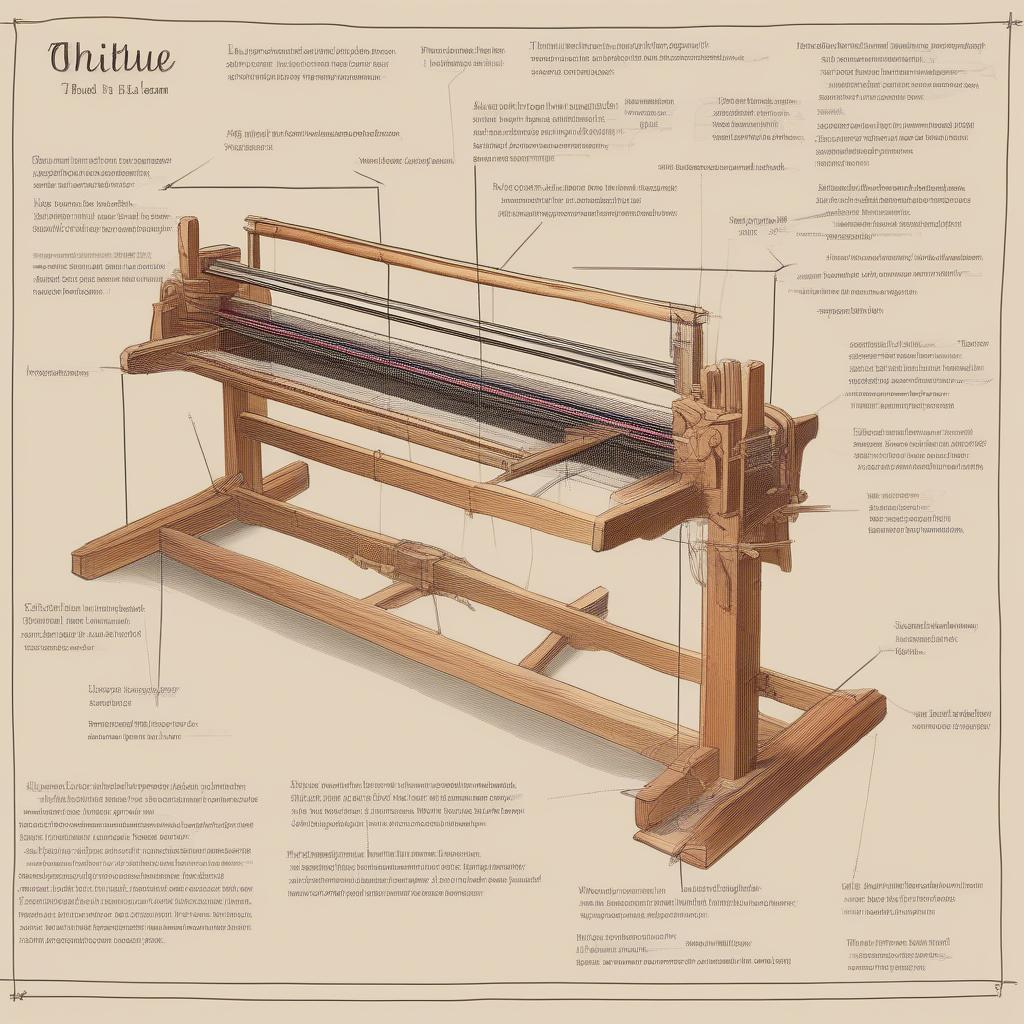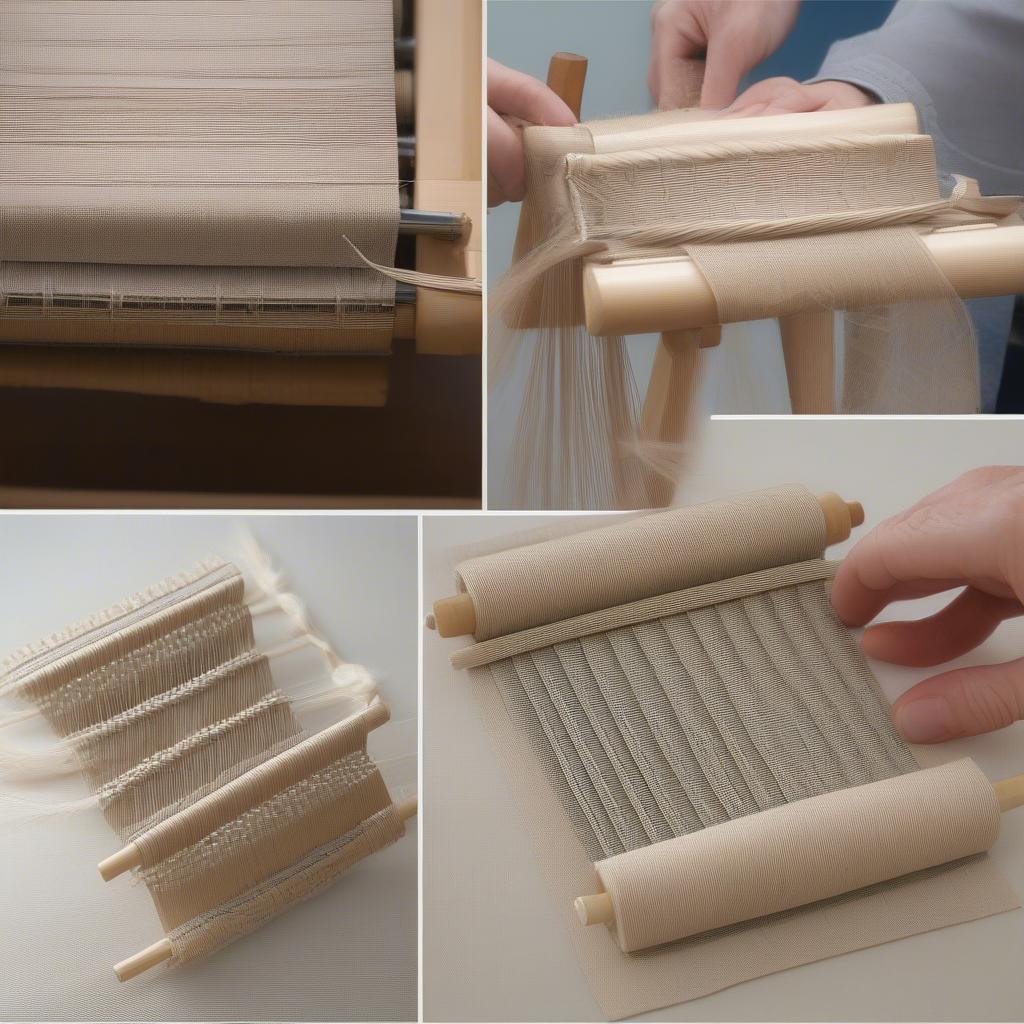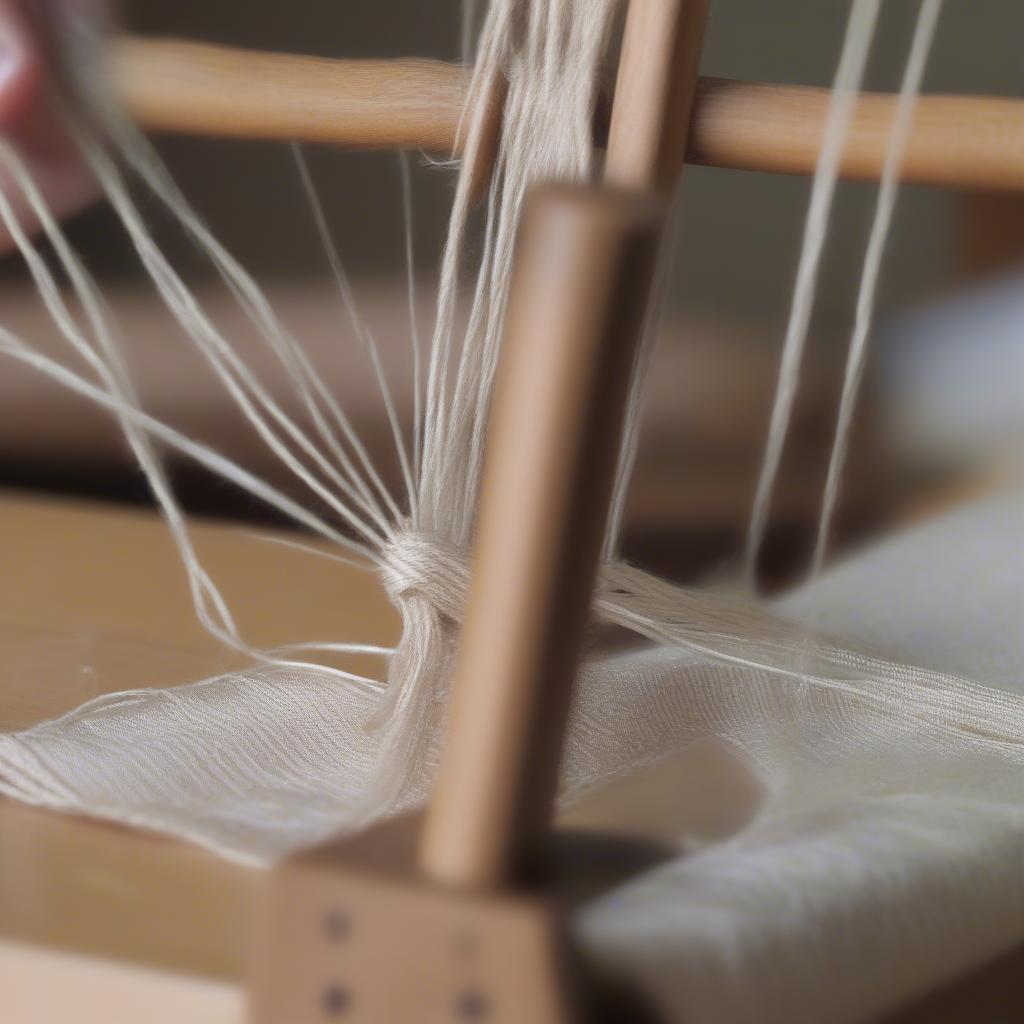Weave Table
How to Weave on a Table Loom
Learning How To Weave On A Table Loom opens up a world of creative possibilities, from scarves and blankets to intricate tapestries and wall hangings. Whether you’re a complete beginner or looking to refine your skills, this guide will provide you with a comprehensive understanding of table loom weaving.
Getting Started with Your Table Loom
 Beginner's Guide to Setting Up a Table Loom
Beginner's Guide to Setting Up a Table Loom
Before you begin weaving, it’s essential to familiarize yourself with the basic components of a table loom. Key parts include the warp beam (where the warp threads are wound), the cloth beam (where the woven fabric is collected), the heddles (which lift and lower the warp threads), the reed (which spaces the warp threads evenly), and the shuttle (which carries the weft thread). Understanding how these elements work together is crucial for successful weaving. For those new to weaving, consider an easy weaving table loom to start your weaving journey.
Warping Your Loom: The Foundation of Weaving
Warping the loom, the process of preparing the warp threads, can seem daunting at first, but with practice, it becomes second nature. Begin by measuring out the desired length and number of warp threads for your project. Then, carefully thread the warp through the heddles and reed, following a specific pattern depending on your desired weave structure. This meticulous process forms the foundation of your woven piece. It’s important to maintain consistent tension throughout the warping process to prevent uneven weaving.
Weaving Techniques: From Plain Weave to More Complex Patterns
 Basic Weaving Techniques on a Table Loom
Basic Weaving Techniques on a Table Loom
Once your loom is warped, the real fun begins! The most basic weaving technique is plain weave, where the weft thread passes over and under alternating warp threads. This simple yet versatile technique is perfect for beginners. As you gain confidence, you can explore more complex patterns like twill, satin, and overshot, each creating unique textures and designs. Are you interested in learning how to weave on a specific loom model like an Ashford? Check out our guide on how to weave on an ashford table loom.
Mastering the Shuttle: Tips and Tricks
The shuttle is your primary tool for carrying the weft thread across the warp. A smooth and controlled shuttle movement is essential for creating even tension and preventing tangles. Practice throwing the shuttle back and forth across the shed (the opening created by the heddles) to develop a comfortable rhythm.
“A well-maintained shuttle is key to efficient weaving,” advises expert weaver, Emily Carter. “Make sure the bobbin is wound evenly and the shuttle glides smoothly across the race.”
Troubleshooting Common Weaving Problems
Even experienced weavers encounter challenges. Common issues include broken warp threads, uneven tension, and tangles in the weft. Learning how to troubleshoot these problems will save you time and frustration.
Dealing with Broken Warp Threads
Broken warp threads are inevitable. Don’t panic! Simply tie a new knot and continue weaving. If you’re looking for a specific loom for fabric weaving, explore our recommendations on the best table loom to weave fabric with.
 Fixing Broken Warp Threads on a Table Loom
Fixing Broken Warp Threads on a Table Loom
Finishing Your Woven Piece
Once you’ve reached the end of your warp, it’s time to finish your woven piece. Carefully remove the fabric from the loom and secure the loose ends of the warp and weft threads to prevent unraveling. You can then add fringes, hems, or other embellishments to complete your project.
“Finishing is just as important as the weaving itself,” says textile artist, John Miller. “It’s the final touch that elevates your creation.”
Conclusion: Embrace the Art of Table Loom Weaving
Learning how to weave on a table loom is a rewarding journey. With patience and practice, you can create beautiful and functional textiles that reflect your unique style. For those curious about other weaving resources, you might find the ff14 weaver table information interesting. Explore the world of weaving and discover the endless possibilities of this ancient craft. Perhaps you’re interested in a specific brand like Harris? We have information on the harris table weaving loom as well.
FAQ
- What is the best type of yarn for table loom weaving?
- How do I choose the right size reed for my project?
- What are the different types of table looms available?
- How do I prevent my warp threads from tangling?
- What are some good resources for learning more about weaving?
- How do I calculate the amount of yarn I need for my project?
- How do I fix uneven tension in my weaving?
When you need support, please contact our Hotline: +84 388 951 999, address: Hanoi, Vietnam or Tech Avenue, Suite 12, San Francisco, CA 94105, USA. We have a 24/7 customer support team.
